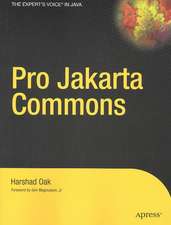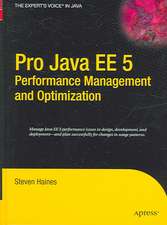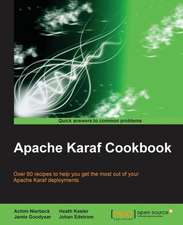Python 2 and 3 Compatibility: With Six and Python-Future Libraries
Autor Joannah Nanjekyeen Limba Engleză Paperback – 8 dec 2017
Although Python 3 is considered the future of Python, Python 2.x will be maintained for several more years, alongside Python 3, which is not backwards compatible. For those who need to support both versions, this book guides you through the process.
Python 2 and 3 Compatibility explains the syntactical differences between Python 2 and 3, and how to use Python packages Python-Future and Six to implement neutral compatibility. Developers working on either small, medium, or large projects will appreciate the author's clear explanations, detailed examples, and clean techniques to help them extend support for both versions to their existing Python 2-compatible projects.What You'll Learn
- Understand the syntactical differences between Python 2 and 3
- Use the Six and Future libraries
- Review the new features in Python 3
- Choose which Python versions to support when doing neutral support
- Decide on whether to port or provide support for both versions
Professional Python developers and enthusiasts that want to implement Python 3 support for their existing Python 2 compatible code.
Preț: 170.05 lei
Preț vechi: 212.56 lei
-20% Nou
Puncte Express: 255
Preț estimativ în valută:
32.54€ • 33.85$ • 26.87£
32.54€ • 33.85$ • 26.87£
Carte tipărită la comandă
Livrare economică 12-26 aprilie
Preluare comenzi: 021 569.72.76
Specificații
ISBN-13: 9781484229545
ISBN-10: 1484229541
Pagini: 97
Ilustrații: XXIX, 129 p. 1 illus. in color.
Dimensiuni: 178 x 254 x 15 mm
Greutate: 0.3 kg
Ediția:1st ed.
Editura: Apress
Colecția Apress
Locul publicării:Berkeley, CA, United States
ISBN-10: 1484229541
Pagini: 97
Ilustrații: XXIX, 129 p. 1 illus. in color.
Dimensiuni: 178 x 254 x 15 mm
Greutate: 0.3 kg
Ediția:1st ed.
Editura: Apress
Colecția Apress
Locul publicării:Berkeley, CA, United States
Cuprins
1. Printing and BackTick repr.- 2. Numbers.- 3. Setting Metaclasses.- 4. Strings and Bytes.- 5. Package Imports.- 6. Exceptions.- 7. HTML Processing.- 8. Working with Files.- 9. Custom Behavior of Classes.- 10. Collections and Iterators.- 11. More Built-ins.- 12. Standard Library Modules.
Notă biografică
Joannah Nanjekye is from Uganda, a software engineer, conference speaker and a proud FOSS (Free and Open Source Software) contributor who presented at PyCon ZA in South Africa in 2016 and 2017. She shares her knowledge on implementation for Python 2 and 3 support from experiences on her work on open source projects. She worked as software developer for Laboremus Uganda and Fintech Uganda before pursuing a career as Aeronautical Engineer with a bias in Avionics at Kenya Aeronautical College. She is a proud Rails Girls Summer of Code alumnae and was mentored into FOSS development during her time as a scholar.
Textul de pe ultima copertă
Discover clean ways to write code that will run on both Python 2 and 3.This book is tutorial-oriented with detailed examples of how to convert existing Python 2-compatible code to code that will run reliably on both Python 2 and 3.
Although Python 3 is considered the future of Python, Python 2.x will be maintained for several more years, alongside Python 3, which is not backwards compatible. For those who need to support both versions, this book guides you through the process.
Python 2 and 3 Compatibility explains the syntactical differences between Python 2 and 3, and how to use Python packages Python-Future and Six to implement neutral compatibility. Developers working on either small, medium, or large projects will appreciate the author's clear explanations, detailed examples, and clean techniques to help them extend support for both versions to their existing Python 2-compatible projects.
Although Python 3 is considered the future of Python, Python 2.x will be maintained for several more years, alongside Python 3, which is not backwards compatible. For those who need to support both versions, this book guides you through the process.
Python 2 and 3 Compatibility explains the syntactical differences between Python 2 and 3, and how to use Python packages Python-Future and Six to implement neutral compatibility. Developers working on either small, medium, or large projects will appreciate the author's clear explanations, detailed examples, and clean techniques to help them extend support for both versions to their existing Python 2-compatible projects.
Caracteristici
Explains forward compatibility to create Python 2 code that will run on both Python 2 and 3 Provides a manual for Python project maintainers to support both versions Uses two popular Python libraries, Python-Future and Six




















